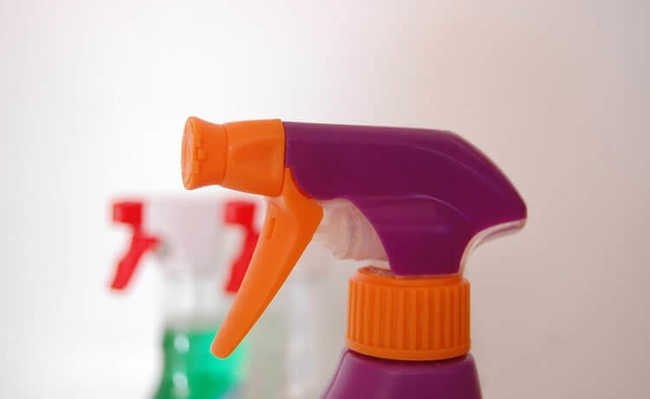what is mysophobia
Unlike the care needed in cases of pandemics or outbreaks of infectious diseases, mysophobia can cause a person to get hurt from washing their hands so much

Edited and resized image of Clay Banks is available on Unsplash
Mysophobia, also called germaphobia and germophobia, is the pathological fear of germs. In this case, the term "germs" broadly refers to any micro-organism that causes disease - for example, bacteria, viruses, fungi or other parasites. Germphobia differs from the necessary hygienic care, especially in the case of infectious disease pandemics, considering that hygiene and the use of alcohol gel in outbreaks or pandemics are extremely necessary and benefit everyone, while germphobia is harmful to the individual.
Germaphobia can be referred to by other names, including:
- Bacilophobia
- Bacteriophobia
- verminophobia
Symptoms of Misophobia
We all have fears, but phobias tend to be seen as irrational or excessive compared to common fears. The suffering and anxiety caused by a phobia of germs is out of proportion to the damage that germs are likely to do. Someone who has myophobia can go to great lengths to avoid contamination.
The symptoms of mysophobia are the same as other specific phobias. In this case, they apply to thoughts and situations involving germs.
Emotional and psychological symptoms of mysophobia include:
- Intense terror;
- Anxiety, worries or nervousness related to exposure to germs;
- Thoughts of exposure to germs that result in illness or other negative consequences;
- Feeling of helplessness control the fear of irrational or extreme germs;
The behavioral symptoms of mysophobia include:
- Avoid or leave situations that could result in exposure to germs when there are no outbreaks or epidemics;
- Spending excessive time thinking about, preparing for or postponing situations that may involve germs when there are no outbreaks or epidemics;
- Difficulty living at home, at work or at school due to fear of germs (for example, the need to wash your hands excessively can limit your productivity in places where you perceive that there are many germs) - when there are no outbreaks or epidemics .
The physical symptoms of mysophobia are similar to those of other anxiety disorders and may include:
- accelerated heartbeat
- sweating or chills
- Shortness of breathe
- chest tightness or pain
- Dizziness
- tingling
- tremors
- Muscle tension
- restlessness
- Nausea or vomiting
- Headache
- difficulty in relaxing
Children who are afraid of germs can also experience the symptoms listed above. Depending on their age, they may have additional symptoms such as:
- cries or screams
- Clinging or refusing to leave parents
- difficulty sleeping
- nervous movements
- self-esteem issues
Impact on lifestyle
With mysophobia, the fear of germs is persistent enough to impact your everyday life even when there are no outbreaks or pandemics. People with this fear can become terribly obsessive and extremely fearful.
Relationship with obsessive-compulsive disorder
The concern with contamination is not necessarily an obese-compulsive disorder, nor is it a misophobia. Care such as avoiding agglomerations, avoiding putting your hand on your face, using alcohol gel, washing your hands frequently and practicing quarantine are necessary precautions, especially in cases of outbreaks or infection pandemics. However, people with mysophobia experience intense anxiety and anxiety about germs. Regardless of pandemic contexts, they show repetitive hygiene behaviors that can be harmful, such as washing their hands so much that they even form wounds.
It is possible to have mysophobia without OCD and vice versa. Some people have both myophobia and OCD.
Causes of myophobia
Like other phobias, misophobia usually starts between childhood and adulthood. Several factors are believed to contribute to the development of a phobia. These include:- Negative childhood experiences. Many people with myophobia can remember a specific event or traumatic experience that led to fears related to germs;
- Family history. Phobias can have genetic causes. Having a close family member with a phobia or other anxiety disorder may increase your risk. However, they may not have the same phobia as you.
- Environmental Factors. Beliefs and practices about cleanliness or hygiene that you are exposed to as a young person can influence the development of myophobia.
- Brain factors. Certain changes in brain chemistry and function play a role in the development of phobias.
Triggers are objects, places or situations that aggravate phobia symptoms. The myophobia triggers that cause the symptoms may include:
- Body fluids such as mucus, saliva or semen
- Impure objects and surfaces such as doorknobs, computer keyboards or unwashed clothing
- Places where there is concentration of germs such as airplanes or hospitals
- Unhygienic practices or people
How is mysophobia diagnosed
Mysophobia falls under the category of specific phobias in the Diagnostic and Statistical Manual of Mental Disorders, Fifth Edition (DSM-5).
To diagnose a phobia, the clinician will conduct an interview. The interview may include questions about your current symptoms, as well as your medical, psychiatric, and family history.
The DSM-5 includes a list of criteria used to diagnose phobias. In addition to having certain symptoms, a phobia often causes significant distress, affects your routine, and lasts for a period of six months or more.
During the diagnosis process, the doctor or doctor may ask questions to identify if your fear of germs is caused by OCD.










